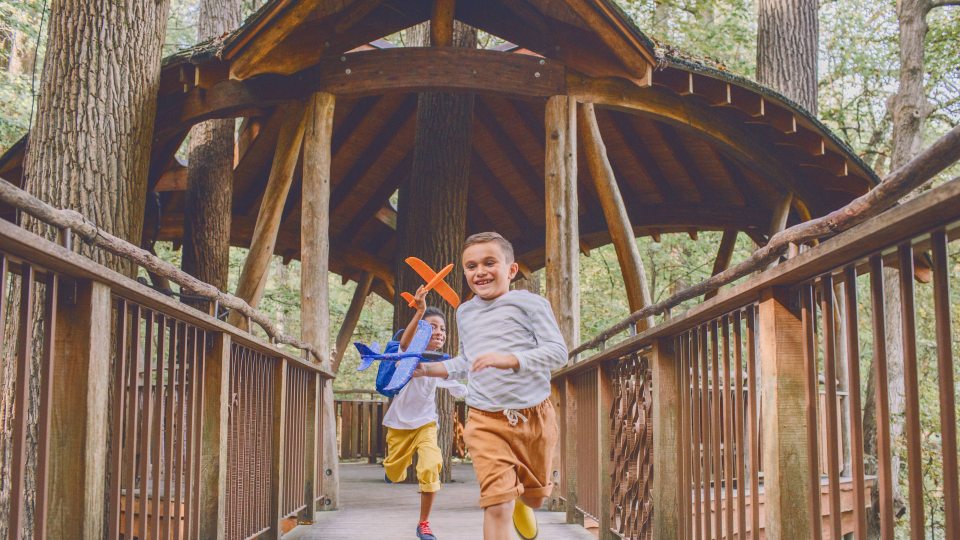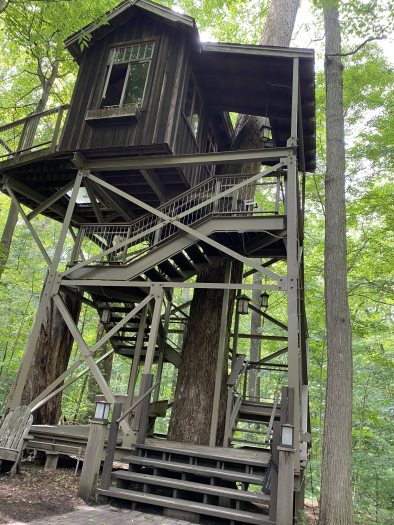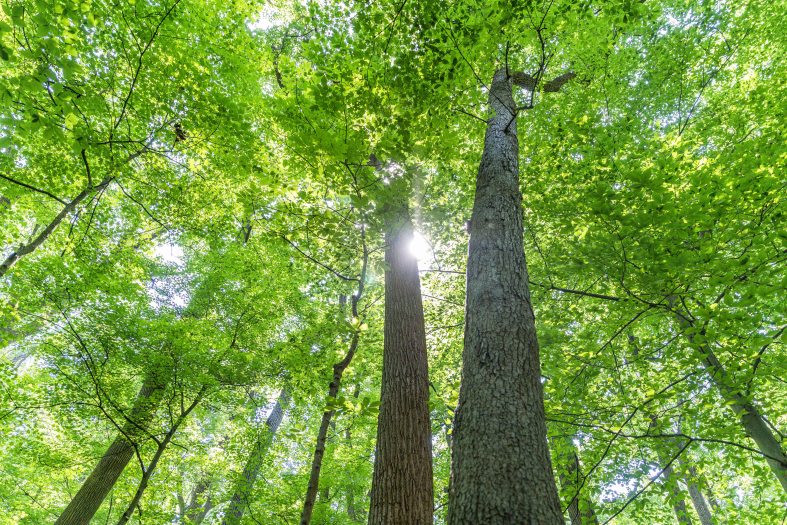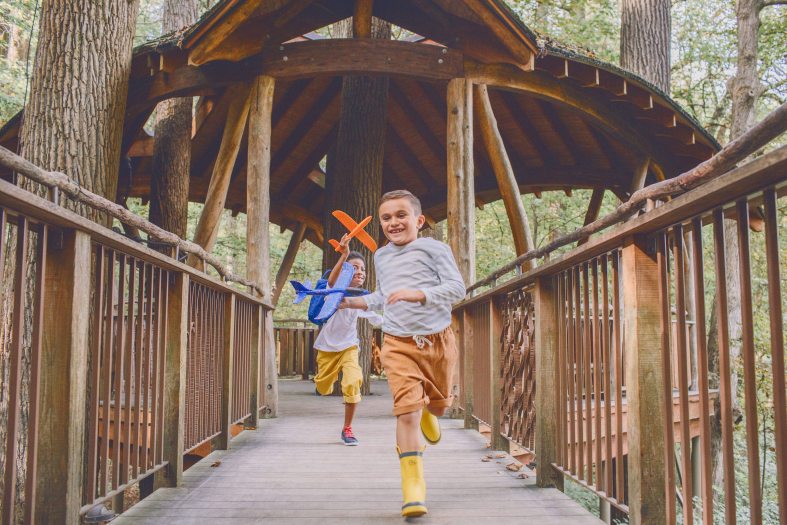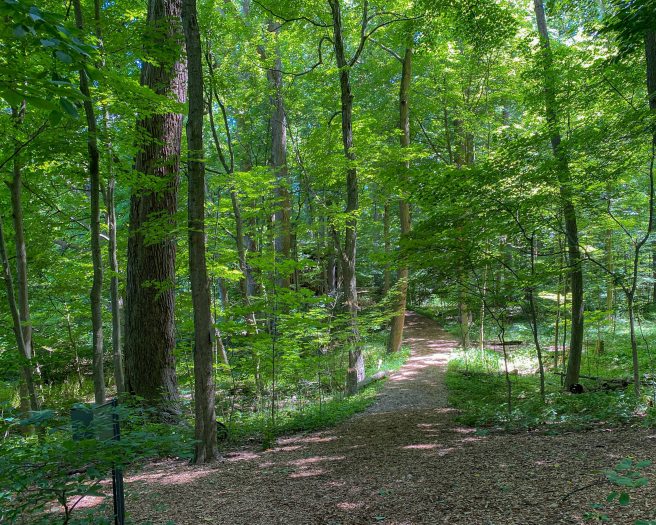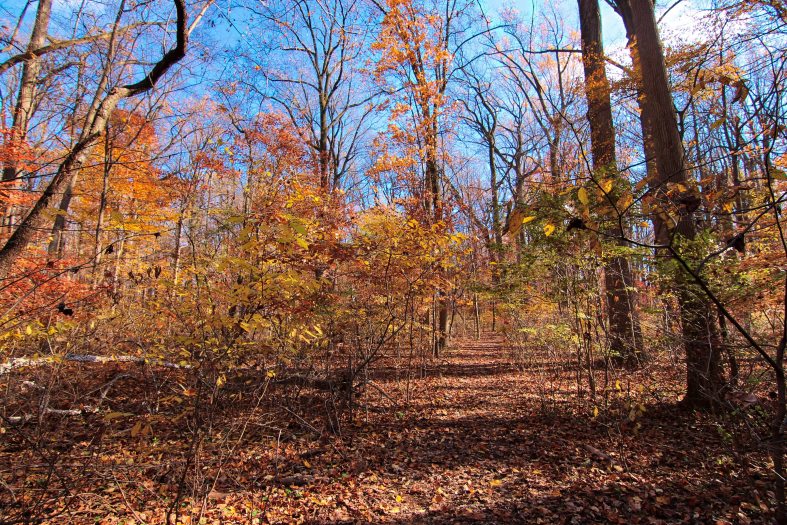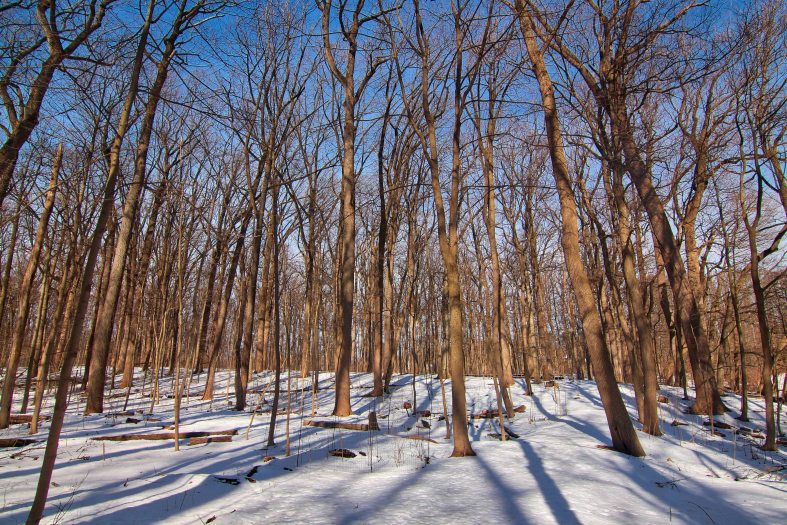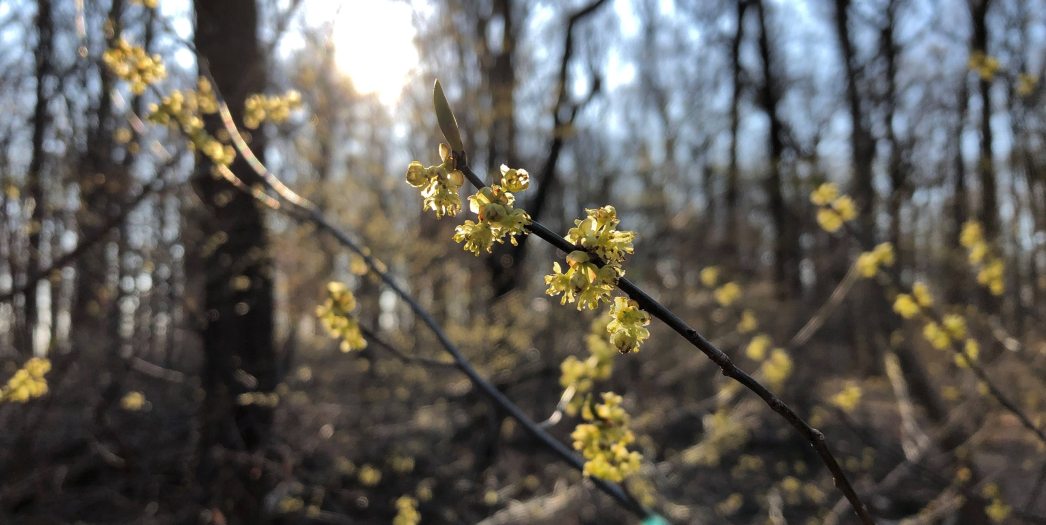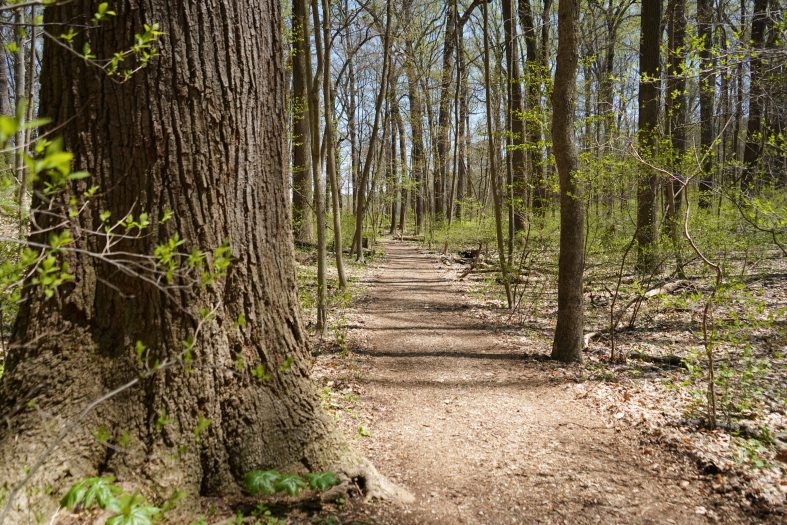Enter the dappled shade of Forest Walk, a hushed woodland realm of scenic beauty. Explore the intimate trails of tulip-trees, the predominant tree within the forest, as well as other deciduous hardwoods. Listen for the call of the woodpecker as you stroll the walkways of Lookout Loft, a rustic, Adirondack-inspired treehouse offering elevated views of the adjacent Meadow Garden. For another squirrel-eye’s view, don’t miss the Birdhouse Treehouse, a cozy cedar structure that soars nearly 20-feet high into the sylvan serenity of the canopy.
About This Garden
The Forest Walk, like our Meadow Garden, is part of the natural landscape managed by Longwood. These two areas function as a combined ecosystem for the myriad plant, animal, and insect species who benefit from our science-led interventions to maintain the equilibrium of their habitats. Unlike the ever-changing Meadow, however, time slows significantly here in the forest, where the competition for light, water, and nutrients is so great that only those species that are tolerant of such an environment can survive. As such, the decisions we make regarding the landscape are informed not only by the needs of the present, but by the impacts of our decisions in the years to come.
As you wander, you’ll see American beech (Fagus grandifolia), oaks (Quercus alba, Quercus rubra, and Quercus velutina), sugar maple (Acer saccharum), pignut hickory (Carya glabra), and tulip-poplar (Liriodendron tulipifera). In fact, Pierre’s Poplar, named after our founder, Pierre S. du Pont, was discovered many years ago in the northern part of the woods. This state champion tree measures 164 feet tall! Beneath these giants you’ll find a thriving understory with many notable horticultural moments—look for spicebush (Lindera benzoin), white ash (Fraxinus americana), flowering dogwood (Cornus florida), and viburnum (Viburnum acerifolium and Viburnum prunifolium).
